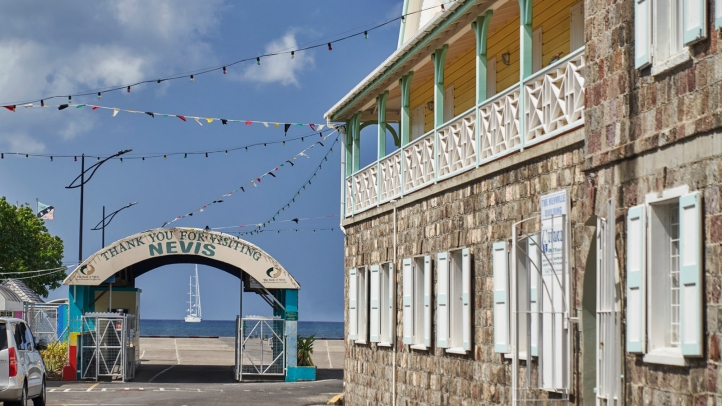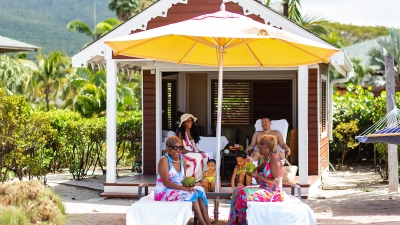St. Kitts and Nevis Fun Facts















The islands of Saint Kitts, Nevis, and Anguilla were united by federal act in 1882 and became an independent state in association with the United Kingdom on February 27, 1967. They joined the West Indies Federation in 1958 and remained in that association until its dissolution in 1962. St. Kitts–Nevis-Anguilla became an associated state of the United Kingdom in 1967, after which Anguilla seceded in 1980. A few years later, the Federation of St. Kitts and Nevis gained its own independence on September 19, 1983.
In honour of St. Kitts and Nevis Independence Day, Four Seasons Resort Nevis is sharing some fun facts about the Federation that we call home.
- Small But Mighty: Saint Kitts and Nevis is a two-island country in the Caribbean and is the smallest country in the Americas, both in area and population. The Federation covers just 104 square miles (269 square kilometres) and is home to around 45,000 people.
- What’s In A Name: St. Kitts is the nickname for the saint that it was named after, Saint Christopher, while Nevis was named after Christopher Columbus first sighted it in 1493 and named it Nuestra Señora de las Nieves meaning "Our Lady of the Snows" due to the island’s cloud-clapped Nevis Peak resembling the snow-capped mountains from Europe.
- Land of Many Firsts: St. Kitts was the first English colony in the Caribbean, earning it the title “The Mother Colony of the West Indies,” and Nevis is the home to the region’s first hotel, The Bath Hotel built in 1778, as well as the Caribbean’s first integrated church, the Cottle Church established in 1824.
- Let Your Flag Fly: The flag of Saint Kitts and Nevis consists of a yellow-edged black band containing two white stars that divides diagonally from the lower hoist-side corner, with a green upper triangle and red lower triangle. Adopted in 1983 to replace the flag of Saint Christopher-Nevis-Anguilla, it has been the flag of the Federation of Saint Kitts and Nevis since the country gained independence that year. Although the flag utilises the colours of the Pan-Africanist movement, the symbolism behind them is interpreted differently: the green triangle represents the fertility of the islands and the red triangle represents the years of struggle against slavery and colonialism; the black stripe reflects the African heritage of the people; the narrow yellow borders flanking the stripe refer to the brilliant sunshine of the islands and, finally, the two white stars represent each of the two islands, as well as symbols of hope and liberty.
- Native Son: Nevis was the birthplace of Alexander Hamilton, one of the founding fathers of the United States of America. Alexander Hamilton grew up in Nevis and in his teens was sent to New York by his wealthy adoptive parents to pursue an education. Guests of the island can tour the historic Hamilton House, neighbouring Museum of Nevis History or bike through the Hamilton Estate plantation.
- The Narrows: St Kitts and Nevis are separated by a stretch of sea called the "Narrows," which is 2 miles (3.2 kilometres) long. Each year there is a Channel Swim event held where people come from around the world to partake in swimming the Narrows from Nevis to St Kitts.
- Going Green: It’s said that St. Kitts and Nevis are so fertile that even the monkeys are green, and you’ll see colonies of them scampering freely beside the roads and beaches. Their ancestors were the pets of 17th-century French settlers, brought over from West Africa. Records suggest they soon escaped to establish a native population, and they’ve been thriving ever since. It is even said that there are more monkeys than people on the islands.
- Sweet as Sugar: St. Kitts and Nevis were once two of the richest islands in the West Indies, having produced more than 20 percent of the British Empire's entire sugar yield. Ruins of sugar mills still dot the landscape, paying homage to the once-booming trade.
- Feeling Hot, Hot, Hot: Nevis is blessed with an abundance of geothermal energy and for centuries visitors to the island have enjoyed the healing powers of the 107 F (41 C) hot springs at Bath Village.
- Nevis Nice: With just 12,000 residents, Nevis is a tranquil and untouched Caribbean destination, with no large cruise ship ports, no traffic lights, no fast food restaurants and no building taller than a coconut tree or built above 1000 feet (300 metres) elevation.
- Mango Mania: St. Kitts and Nevis are home to some of the world’s best tasting mangoes. Thanks to its uniquely balmy climate, its soil supports thousands of trees bearing the sweet fruit. Officially, the islands boast 44 different kinds of mango, but ask any local and they will tell you there are probably closer to 200 different varieties. Some of the more popular are amory polly, julie, and graham.
- For the Culture: Culturama is a public holiday in Saint Kitts and Nevis, observed on the Tuesday after the first Monday in August. It extends the Emancipation Day holidays by one day and is a festival that showcases the cultural heritage of the islands.
- Ready to Rum: The first distillation of rum in the Caribbean took place on the sugarcane plantations there in the 17th century. Molasses, a by-product of the sugar refining process, was fermented into alcohol and then distilled to remove impurities, which produced the first modern rums. Tradition suggests this type of rum first originated on the island of Nevis. It is currently illegal to distil rum on Nevis, but it can be aged and blended locally.
- Benefits of the Bush: When most people think of coming to St. Kitts and Nevis, their first thoughts are the sunshine, palm trees and a good rum cocktail, but they might not realise that many natural herbs and plants grow there that help cure and prevent many physical ailments. On both islands, you'll find an abundance of native plants, fruit trees and herbs - locally referred to as “bush” - that provide many natural health benefits. Whether you want to fight cancer, regulate your sugar or help your heart, you are sure to find a plant on St. Kitts and Nevis that will do the trick.
- Turtle Time: From June to October, the beaches of St. Kitts and Nevis come alive as sea turtles come ashore to nest. Three species of sea turtles nest on the shores of the islands: the hawksbill, the leatherback, and the green turtle. These majestic creatures journey hundreds of miles each nesting season to return to the same place where they were hatched and, under the glow of the moonlight, lay the next generation of sea turtles that will one day make the same journey.
As you can see, Kittian and Nevisian culture is a modern embodiment of the spirit and soul of the Caribbean. The jubilant nature and vibrant personality of the people is felt all over the islands as both a reflection of their storied past and an eager look towards a brighter future. With a lively spirit that is celebrated equal parts pride, passion and empowerment, St. Kitts and Nevis is a place where smiles greet you at every turn, a rum punch is always in hand and a Calypso beat beckons you to the dance floor.
For more information about the current offers at Four Seasons Resort Nevis or to make reservations, email reservations.nev@fourseasons.com or call 869 469 6238.

Miami, 33145
USA

Four Seasons Resort Nevis,
Nevis, West Indies, Caribbean



 @FourSeasonsPR
@FourSeasonsPR